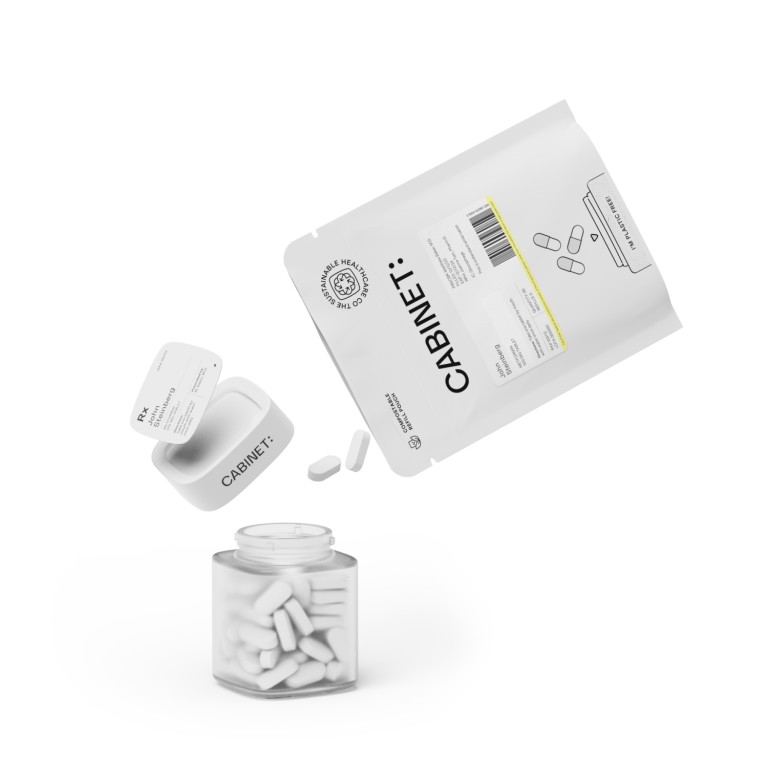If you're suffering from muscle spasms or pain caused by injuries, your doctor may have prescribed you Cyclobenzaprine. But what exactly is Cyclobenzaprine, and why is it so important to take the correct dosage? In this comprehensive guide, we'll dive into the ins and outs of Cyclobenzaprine dosing to ensure you're on the right track to recovery.
Understanding Cyclobenzaprine
Cyclobenzaprine is a muscle relaxant that is commonly prescribed for short-term relief of muscle spasms and associated pain. It works by acting on the nervous system to help relax the muscles, providing much-needed relief to those who are suffering. However, it's important to note that Cyclobenzaprine is not intended for long-term use, as its effectiveness may wane over time.
When it comes to understanding Cyclobenzaprine, it's essential to delve deeper into its mechanism of action and its role in medicine. By exploring these aspects, we can gain a more comprehensive understanding of how this medication works and its potential benefits.
What is Cyclobenzaprine?
Cyclobenzaprine is a medication that belongs to a class of drugs known as centrally acting muscle relaxants. It is available as both a brand-name and generic medication and is typically taken orally in tablet form. Cyclobenzaprine is commonly prescribed to patients suffering from acute musculoskeletal conditions, such as muscle strains or sprains.
When an individual experiences a muscle strain or sprain, the affected muscles can become tense and painful. This can significantly impact their daily activities and overall quality of life. Cyclobenzaprine steps in to provide relief by targeting the central nervous system and promoting muscle relaxation.
It's worth noting that Cyclobenzaprine is not a cure for the underlying condition causing the muscle spasms and associated pain. Instead, it offers temporary relief by addressing the symptoms and allowing the affected individual to recover more comfortably.
The Role of Cyclobenzaprine in Medicine
Cyclobenzaprine works by suppressing the transmission of pain signals in the brain and spinal cord, ultimately relieving muscle spasms and associated pain. While it is not fully understood how Cyclobenzaprine achieves this effect, it is thought to be due to its sedative properties and the modulation of certain neurotransmitters in the central nervous system.
When Cyclobenzaprine is ingested, it is rapidly absorbed into the bloodstream and distributed throughout the body. It then crosses the blood-brain barrier, allowing it to exert its effects on the central nervous system. By modulating neurotransmitters such as norepinephrine and serotonin, Cyclobenzaprine can help reduce muscle spasms and alleviate pain.
It's important to highlight that Cyclobenzaprine should only be used as directed by a healthcare professional. The dosage and duration of treatment will vary depending on the individual's condition and response to the medication. Additionally, it's crucial to follow the prescribed guidelines and not exceed the recommended dosage, as misuse or abuse of Cyclobenzaprine can lead to adverse effects and potential risks.
In conclusion, Cyclobenzaprine is a valuable medication for providing short-term relief from muscle spasms and associated pain. By understanding its mechanism of action and role in medicine, healthcare professionals can make informed decisions when prescribing this medication to their patients. However, it's essential to remember that Cyclobenzaprine is not a long-term solution and should be used cautiously and under medical supervision.
The Importance of Correct Dosage
Taking the correct dosage of Cyclobenzaprine is crucial for two main reasons: avoiding the risks of an overdose and ensuring that the medication is effective in relieving your symptoms.
Risks of Overdose
Seeking the right Cyclobenzaprine dosage is essential to prevent the risk of an overdose. Taking too much of the medication can lead to serious side effects, including drowsiness, confusion, and abnormal heart rhythms. In severe cases, an overdose can even be life-threatening. It is important to strictly follow the prescribed dose and consult your healthcare provider if you have any concerns.
When it comes to medication, it is always better to be safe than sorry. Overdosing on Cyclobenzaprine can have detrimental effects on your health and well-being. The risk of an overdose is particularly high if you have a history of substance abuse or if you are taking other medications that can interact with Cyclobenzaprine. Therefore, it is crucial to communicate openly with your healthcare provider about any other medications or substances you are taking to ensure your safety.
Furthermore, an overdose of Cyclobenzaprine can not only affect your physical health but also impact your mental well-being. Experiencing confusion and drowsiness can impair your cognitive abilities, making it difficult to perform daily tasks and potentially putting you at risk for accidents or injuries. By adhering to the correct dosage, you can minimize these risks and ensure that you are taking the medication in a safe and responsible manner.
Underdosing and Inefficacy
On the other end of the spectrum, underdosing can result in the medication being ineffective in relieving your muscle spasms and pain. This can prolong your suffering and delay your recovery process. Working with your doctor to determine the appropriate dosage for your condition is essential to ensure that you are receiving the full benefit of Cyclobenzaprine.
It is important to understand that everyone's body reacts differently to medication. What may be an effective dosage for one person may not be sufficient for another. This is why it is crucial to have open and honest communication with your healthcare provider. By discussing your symptoms and any changes in your condition, your doctor can make informed decisions about adjusting your dosage to optimize the effectiveness of Cyclobenzaprine.
Underdosing can have a significant impact on your quality of life. If you are not taking enough Cyclobenzaprine, you may continue to experience muscle spasms, pain, and discomfort, which can interfere with your daily activities and overall well-being. By ensuring that you are taking the appropriate dosage, you can maximize the benefits of the medication and improve your quality of life.
It is also worth noting that finding the correct dosage may require some trial and error. Your doctor may start you off with a lower dosage and gradually increase it based on your response to the medication. It is important to be patient during this process and provide feedback to your healthcare provider to help them make the necessary adjustments.
In conclusion, taking the correct dosage of Cyclobenzaprine is crucial for both your safety and the effectiveness of the medication. Avoiding an overdose and ensuring that the medication is not underdosed are key factors in your recovery process. By working closely with your healthcare provider and following their guidance, you can optimize the benefits of Cyclobenzaprine and improve your overall well-being.
Determining the Right Dosage
When it comes to finding the appropriate dosage of Cyclobenzaprine for your muscle spasms, several factors come into play. It's important to consider these factors to ensure you are taking the medication in a safe and effective manner.
Factors Influencing Dosage
1. Age: Age plays a significant role in determining the correct dosage of Cyclobenzaprine. Older individuals and children may require dosage adjustments as they tend to be more susceptible to the effects of the medication. This is because their bodies may process the drug differently compared to adults.
2. Medical Condition: The severity of your muscle spasms and any underlying health conditions are crucial factors that influence the appropriate dosage of Cyclobenzaprine. Your doctor will consider these factors to determine the most suitable dosage for your specific situation. It's important to provide your healthcare provider with a comprehensive medical history to ensure they have all the necessary information to make an informed decision.
3. Other Medications: It's essential to inform your doctor about any other medications you are taking, as certain drugs can interact with Cyclobenzaprine. These interactions can affect the efficacy and safety of the medication. Your doctor will evaluate the potential interactions and adjust the dosage accordingly to ensure your well-being.
Dosage for Different Conditions
When starting Cyclobenzaprine treatment for muscle spasms, the typical initial dosage for adults is 5 milligrams (mg) taken orally three times a day. However, it's important to note that this dosage may vary depending on individual needs and response to the medication. Your doctor will closely monitor your progress and make any necessary adjustments to optimize your treatment plan.
Elderly patients, due to their age-related physiological changes, may be prescribed a lower dosage of Cyclobenzaprine. This approach helps minimize the risk of potential side effects while still providing the desired therapeutic effects. It's crucial for older individuals to follow their doctor's instructions carefully and report any unusual symptoms or concerns.
For pediatric patients, the dosage of Cyclobenzaprine should be determined by a healthcare professional. Factors such as the child's weight and medical history will be taken into account to ensure the appropriate dosage is administered. Pediatric dosing requires careful consideration to ensure the safety and effectiveness of the medication for younger patients.
Remember, finding the right dosage of Cyclobenzaprine is a collaborative effort between you and your healthcare provider. Open communication and regular follow-ups are essential to ensure the medication is working optimally for your specific needs.
How to Take Cyclobenzaprine
When it comes to taking Cyclobenzaprine, always follow the instructions provided by your healthcare provider. Here are some general guidelines:
Instructions for Use
1. Take Cyclobenzaprine as directed by your doctor, usually two to four times a day.
2. Swallow the tablet whole with a glass of water. Do not crush, chew, or break the tablet, as this may affect its effectiveness.
3. You can take Cyclobenzaprine with or without food, but it may be helpful to take it with food if you experience stomach upset.
What to Do if You Miss a Dose
If you accidentally miss a dose of Cyclobenzaprine, take it as soon as you remember. However, if it is close to the time for your next scheduled dose, skip the missed dose and continue with your regular dosing schedule. Do not take a double dose to make up for the missed one.
Potential Side Effects and Interactions
Like any medication, Cyclobenzaprine can cause side effects. Fortunately, most side effects are mild and temporary. Common side effects of Cyclobenzaprine include drowsiness, dry mouth, and dizziness. These side effects typically subside as your body adjusts to the medication.
Common Side Effects
While rare, severe side effects may occur, such as an allergic reaction or hallucinations. If you experience any unusual or concerning side effects, seek medical attention immediately.
Drug Interactions to Be Aware Of
Cyclobenzaprine can interact with certain medications, potentially increasing the risk of side effects or affecting their efficacy. Inform your doctor about all the medications and supplements you are taking to ensure their compatibility with Cyclobenzaprine.
In conclusion, taking the proper Cyclobenzaprine dosage is crucial for your safety and the effectiveness of the treatment. Adhering to your prescribed dosage and consulting with your healthcare provider will help ensure a smoother recovery process. Remember, always follow your doctor's recommendations and if you have any concerns, don't hesitate to reach out for professional assistance.
About Cabinet Health
Cabinet Health is your trusted online pharmacy, committed to providing high-quality medications and excellent customer service. Visit our website today to learn more about our wide range of products and enjoy the convenience of doorstep delivery.








